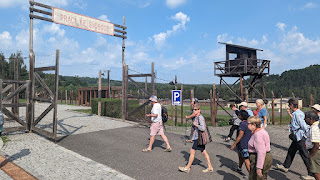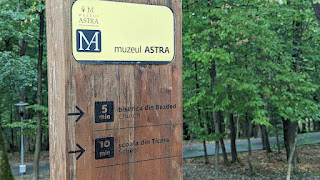Greetings!
Ever been to a concentration camp? I told myself that I wouldn't, but there are lots of places used during WWII to hold people against their will. Some far more greviously than others. The one we visited today (Vojna Memorial) was asked by those who survived it to call it a concentration camp, but it has a slightly different story than one you are familiar with.
It was one of many camps used from 1949 to 1961 by Germany to house political dissidents, and to force them to work in uranium mines. There were executions (247), and workers died of uranium poisoning and other illnesses (2000), but many more experienced a prison held without charges during that time. Conditions were harsh, and survivors scarce.
In
Pisek, on the banks of the Otavo River, we crossed the second oldest bridge in Europe, even earlier than the famous Charles Bridge we crossed yesterday. Built before 1200, the sides are lined with statues of
Saint John of Nepomuk, his head surrounded by five stars. On the far side were five sand sculptures, contributed recently by a local artisan.
On the way to Cesky Krumlov, we stopped at a small town to visit a set of old horse stables wherein the 21st generation owner walked us through the last 160 years of his family business. He answered our questions concerning the impact of the land occupations of the Germans, Slavs, and Czechs on his long life. His response was that there wasn't much that the governments that have passed through his time needed or found valuable. Nor was there anything they provided.
Cesky Krumlov, our destination today, is a protected UNESCO World Heritage site due to the large number of Gothic, Rennaisance, and Baroque architecture. The castle at its center was the seat of the
Rosenburg House from 1250 to 1602, when it was sold to
Rudolf II, Holy Roman Emperor.








Comments
Post a Comment